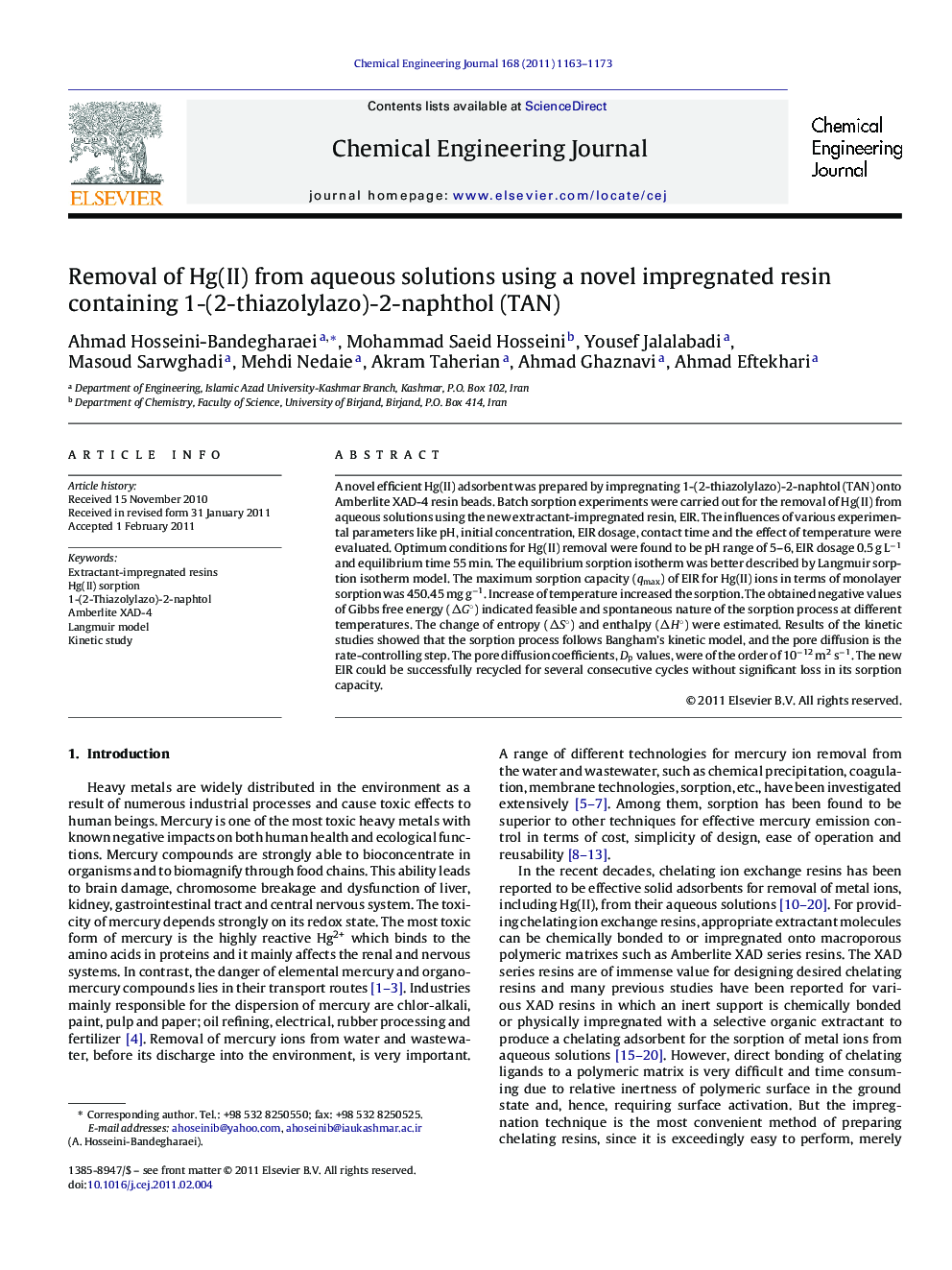| Article ID | Journal | Published Year | Pages | File Type |
|---|---|---|---|---|
| 151170 | Chemical Engineering Journal | 2011 | 11 Pages |
A novel efficient Hg(II) adsorbent was prepared by impregnating 1-(2-thiazolylazo)-2-naphtol (TAN) onto Amberlite XAD-4 resin beads. Batch sorption experiments were carried out for the removal of Hg(II) from aqueous solutions using the new extractant-impregnated resin, EIR. The influences of various experimental parameters like pH, initial concentration, EIR dosage, contact time and the effect of temperature were evaluated. Optimum conditions for Hg(II) removal were found to be pH range of 5–6, EIR dosage 0.5 g L−1 and equilibrium time 55 min. The equilibrium sorption isotherm was better described by Langmuir sorption isotherm model. The maximum sorption capacity (qmax) of EIR for Hg(II) ions in terms of monolayer sorption was 450.45 mg g−1. Increase of temperature increased the sorption. The obtained negative values of Gibbs free energy (ΔG°) indicated feasible and spontaneous nature of the sorption process at different temperatures. The change of entropy (ΔS°) and enthalpy (ΔH°) were estimated. Results of the kinetic studies showed that the sorption process follows Bangham's kinetic model, and the pore diffusion is the rate-controlling step. The pore diffusion coefficients, Dp values, were of the order of 10−12 m2 s−1. The new EIR could be successfully recycled for several consecutive cycles without significant loss in its sorption capacity.
